Picture it: You’re rushing through your routine, and you reach for the kibble, but then wham, you’re met with an empty bag. Worse, you have no way of getting more until tomorrow, and your dog’s waiting to eat.
Yes, even the most responsible pet parent has been there when #life happens.
Luckily, you can often feed him with what you have on hand to hold him over.
Below, we’ll share tips for filling your dog’s belly until you can reach the store (or until his online food delivery shows up!)
Need dog food fast? Check out these same-day dog food delivery options!
What Can I Feed My Dog If I’m Out of Dog Food?
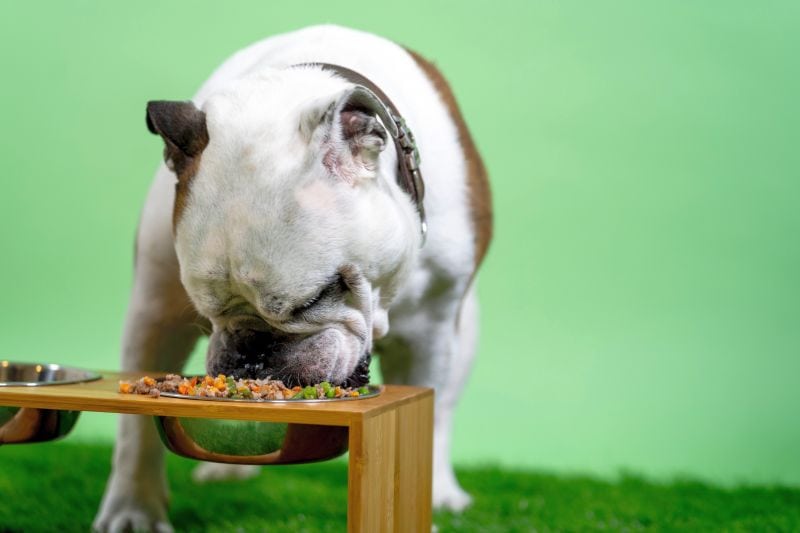
Don’t beat yourself up too much about running out of dog food. It happens. You likely already have some ingredients to whip up a decent mutt meal or two to get by until you make it to the store.
The building blocks of a well-balanced homemade meal in a pinch are:
Emergency Dog Food Component #1: Protein
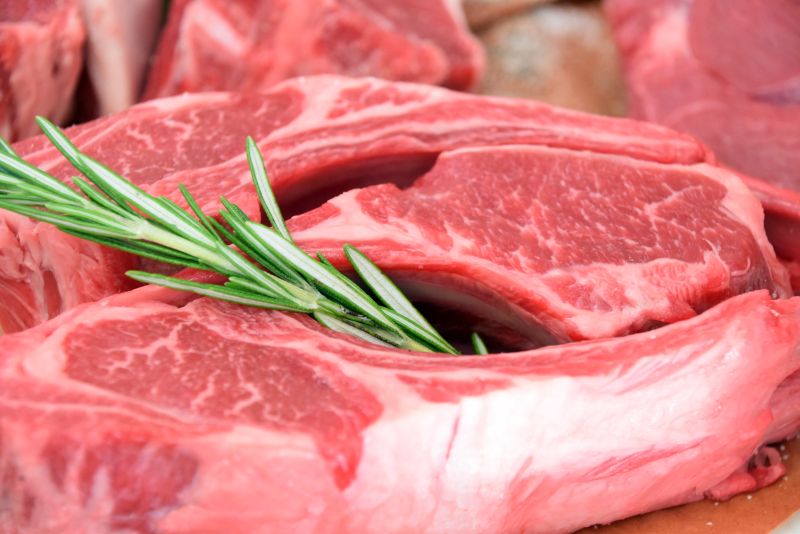
Protein is a pillar of pupper nutrition, responsible for various bodily processes. The AAFCO nutrient profiles for adult canines recommend dog food have at least 18% protein for adult dogs and 22.5% for puppies, pregnant females, and nursing mama dogs. Calculating this for a quick homemade meal sounds tricky, but dogs generally need 1 gram of protein per pound of body weight daily. All you have to do is weigh and portion the cooked protein.
Luckily, many of the best meats for dogs are ones you likely already have in the house, like beef, chicken, and pork. The key is picking the leanest cut possible and cooking meat to the proper temperature without adding extra seasonings and fats that can sicken your dog. Other proteins that work include lamb, salmon, and venison.
Canned meats such as rinsed canned chicken or fish can also be used. Rinsing is vital, as it removes excess salt used in the canning process that can sicken your pup.
Emergency Dog Food Component #2: Carbohydrates
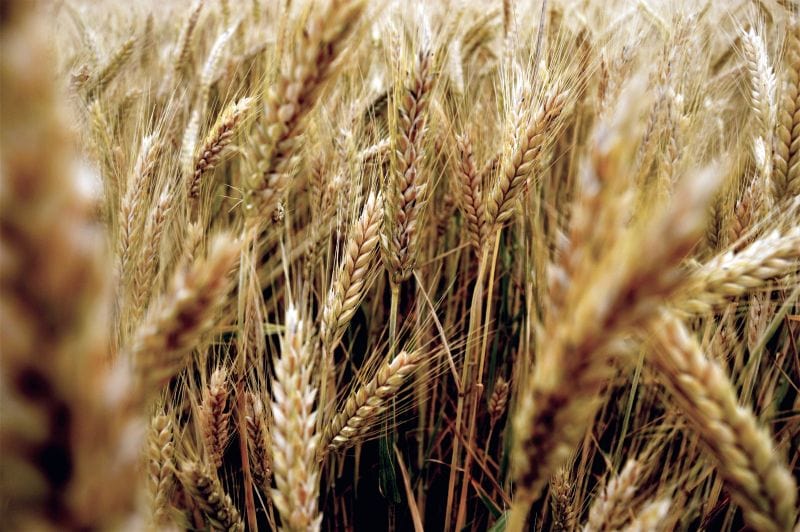
Carbohydrates provide energy, fiber, and satiety to mutt meals, along with core vitamins and minerals (particularly in the case of enriched grains).
The best grains for dogs include brown rice, oats, and quinoa, which are popular in human diets, too, so your pantry may already contain them. Cooked pasta and canned, unsalted corn are other dog-safe carb sources.
If your pooch eats a grain-free dog food because he has grain allergies or intolerances, you’ll want to look for alternative carbohydrate sources like sweet potatoes, potatoes, lentils, or peas. These grain-free diets are only recommended for dogs with diagnosed grain allergies or intolerances, as they’re potentially linked to a deadly heart condition called DCM.
Emergency Dog Food Component #3: Produce
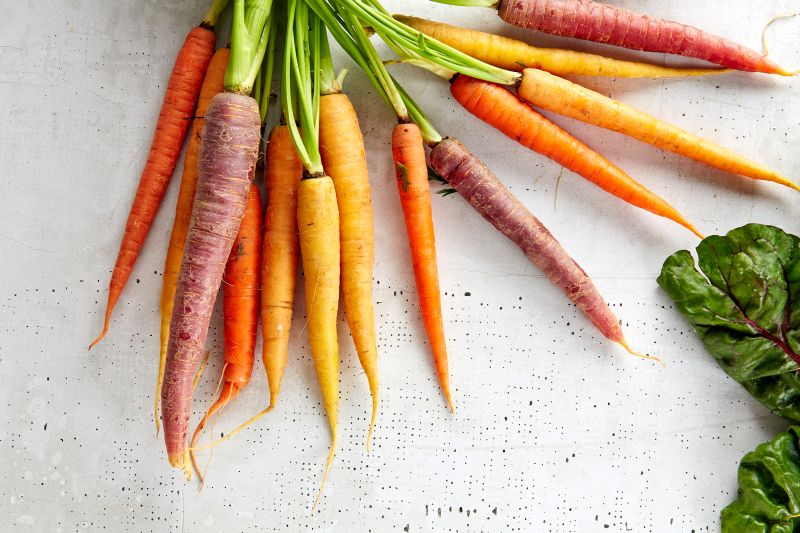
Fruits and vegetables are essential sources of fiber, antioxidants, and vitamins for nose-to-tail health, supporting everything from digestion to your dog’s immune system. The best vegetables for dogs include carrots, green beans, and celery, while fur-friendly fruits are blueberries, apple slices (with the seeds and core removed), and bananas.
The ratio in your dog’s bowl should be 75% protein, 15% produce, and 10% carbohydrates. Feeding your dog a homemade diet all the time isn’t recommended unless it was formulated for your dog by a canine nutritionist or vet. Otherwise, your pup may develop nutrient deficiencies due to an improperly balanced meal plan.
A day or two of homemade dog food won’t cause serious issues for your floof, provided you don’t include toxic ingredients. You could even try out a DIY slow cooker crockpot recipe for your canine if you have a well-stocked pantry and fridge.
Bonus ingredients are tasty morsels of nutrient-rich goodness that take doggy dishes from meh to marvelous. Things like organ meat, eggs, and dog-safe peanut butter make delicious add-ons to any meal, but especially a quick fix between replacing dog food for picky eaters.
Things You Should NEVER Feed Your Dog

Unfortunately, your kitchen is full of dangerous ingredients for dogs. These range from well-known offenders to surprising sources, too. So, always double-check if something is dog-safe before offering it to your sniffer.
Never offer your dog these toxic foods:
- Chocolate
- Avocado
- Onions
- Garlic
- Chives
- Macadamia nuts
- Anything containing Xylitol
- Apple cores
- Caffeine
- Grapes
- Raisins
- Bread dough
- Seasoning packets
- Wild mushrooms
- Walnuts
- Bones
- Alcohol
- Excessive salt
To limit stomach upset, you’ll also want to avoid ingredients like:
- Fats and oils
- Dairy products
- Fried or processed foods
- Spicy ingredients
- Undercooked proteins
- Fatty cuts of meat like bacon
When in doubt, ask your vet. It’s always best to be cautious when introducing a new ingredient. This is particularly important if your dog has known dietary restrictions or health issues.
Feeding your dog another dog food you happened to have on hand isn’t ideal, but it’s probably better than feeding him a homemade food (assuming it’s suitable for his specific health needs and lifestage).
That said, switching foods abruptly can lead to tummy upset, so be prepared.
How Much Food Should I Make for My Dog?
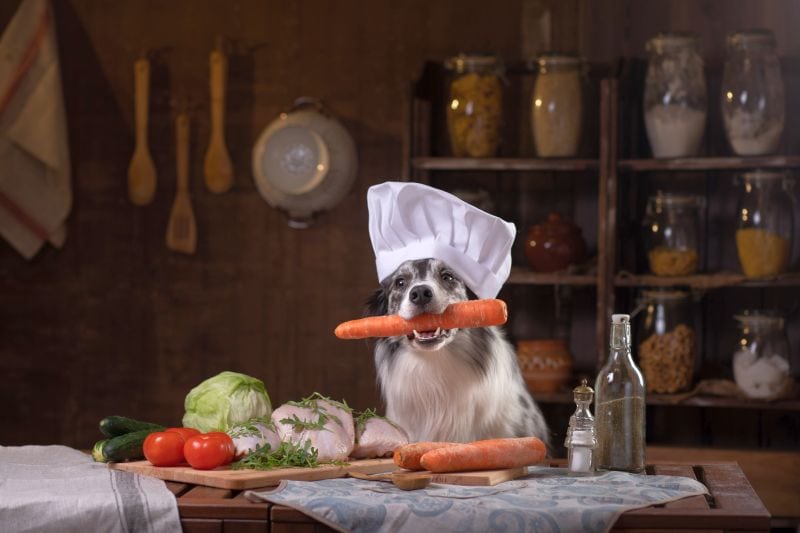
The proper amount of food to prepare for your dog will vary by his size and how many meals are needed until his replacement food arrives. Most of the time, you want to only feed homemade meals for a day or two at most, so scale according to the 75% meat / 15% produce / 10% carbohydrate ratios, based on 1 gram of cooked protein per pound of canine body weight.
After the Crisis Has Passed: Resuming Normal Feedings

Thankfully, transitioning from a homemade diet of one or two meals to your dog’s ordinary diet won’t require the same care as switching your pup to new dog food. Just offer the next meal as your sniffer’s regular food once it’s available.
Sure, pickier pooches who like the homemade stuff may give you a “what the hay?” look, but he should be back on track in no time.
I Ran Out of Dog Food: FAQ
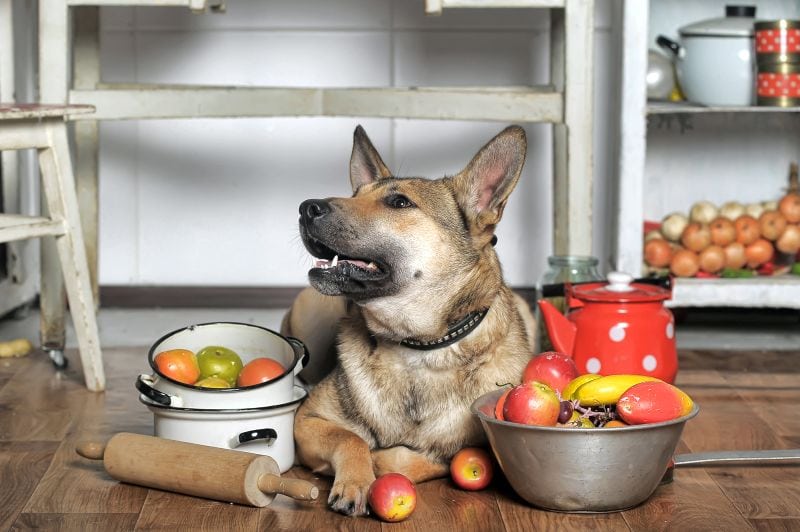
Running out of dog food’s never fun, but there are ways to navigate the hurdle and avoid doggy diarrhea and other disasters. We’ve tackled the most commonly asked questions surrounding the topic to highlight any lingering dos and don’ts.
Can I give my dog cat food if I ran out of dog food?
No. Cat food is much higher in protein than dog food, making it much harder on your pup’s kidneys and liver. It can also lead to stomach upset, diarrhea, and even pancreatitis in some canines.
What to do if you need dog food but have no money?
If you’re short on funds, there are places to get free and low-cost dog food, like pet shelters and online message boards. PetHelpFinder is another potential resource connecting you to pet food assistance, affordable vaccines, and more.
With the rising cost of, well, everything, dog owners may benefit from considering budget-friendly dog foods if their favorite food is now at a sky-high price tag. Many more affordable foods feature the same perks for less, so don’t be fooled into thinking the lower price tag means lower quality.
How long can dogs go out without food?
Some dogs can go up to five days without eating, but you should never skip feeding time because of your schedule. An automatic dog feeder ensures your Fido’s fed if you get stuck at the office. Combined with a doggy door, some dogs can be self-sufficient for a short time. A dog walker is recommended for some attention, however.
If your dog isn’t eating because he doesn’t want to, it’s time for a vet visit. One missed meal for a sour stomach isn’t an emergency, but skipping two meals and having added symptoms like vomiting or diarrhea makes a vet trip necessary.
What to do if you miss a dog’s meal?
If you miss your dog’s meal, offer him food when you can before resuming his regular feeding schedule. Don’t overfeed him to make up for the missed meal or anything similar, as this can lead to stomach woes like canine bloat or vomiting.
What can I feed my dog if I have no dog food?
In a pinch, you can whip up a homemade dog dish consisting of a cooked protein like chicken, a carbohydrate like brown rice, and fruits and vegetables like blueberries and carrots. Dogs need about 1 gram of cooked protein per pound, so measure and build the meal around that, as that’s the most important aspect.
A homemade dish like this is sufficient for feeding your dog for a day or two, but it shouldn’t be a steady diet, as it can lead to nutritional deficiencies in canines.
What happens if I forgot to feed my dog for a day?
One day of skipped meals isn’t a make-or-break situation for most dogs, but it can be dangerous for dogs with health conditions like diabetes. In these cases, bringing your pup in for an exam is recommended to ensure he won’t have any lingering problems from the disruption in his eating schedule.
Going forward, look at ways to prevent you from forgetting, such as setting alarms on your phone or leaving sticky notes around the house. Investing in an automatic feeder can also help in cases where you forget or run behind.
Have you run out of dog food at the worst time? What homemade solution did you create for your canine? Share with us in the comments. We’d love to hear.

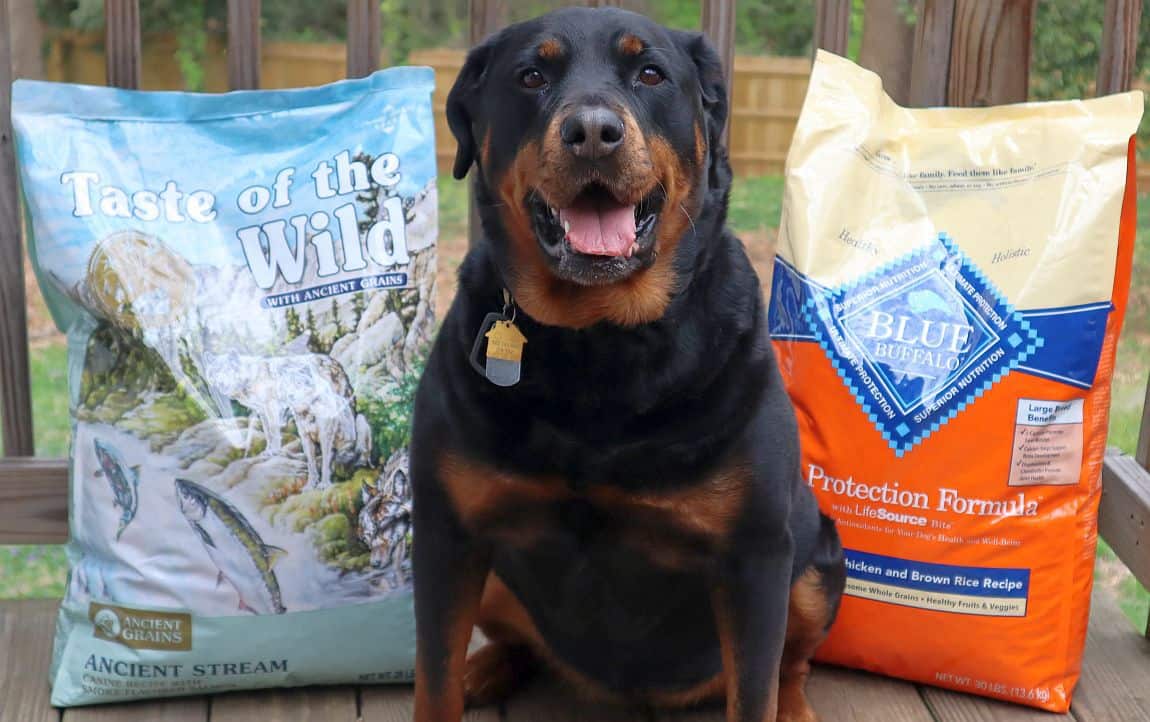



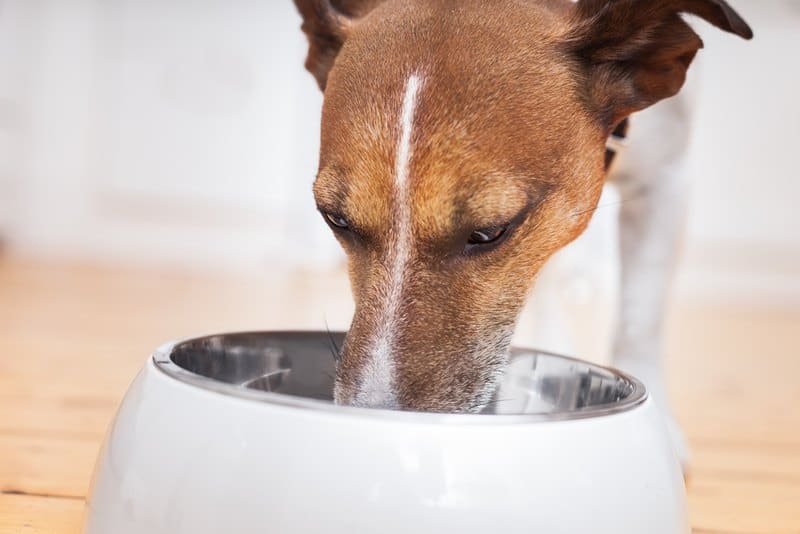
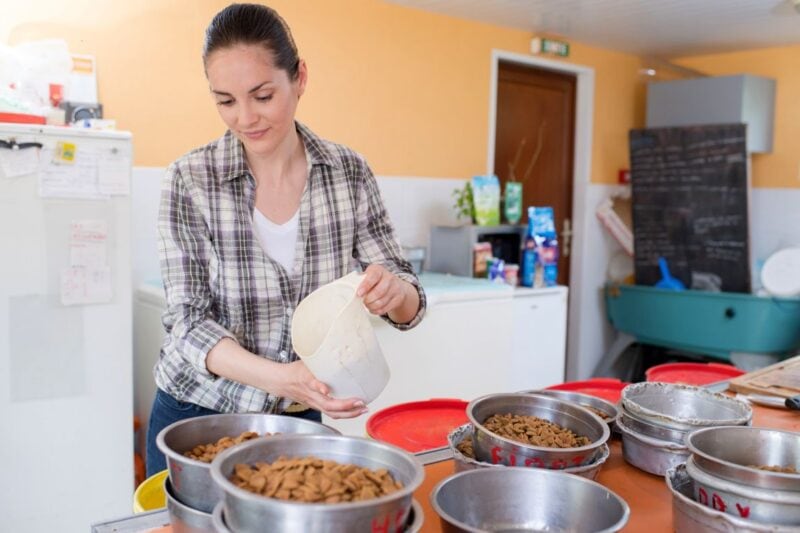
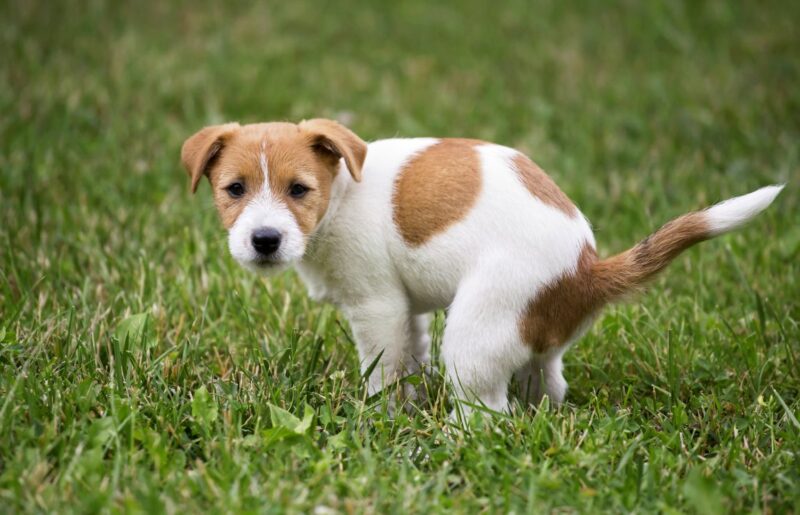




Leave a Comment